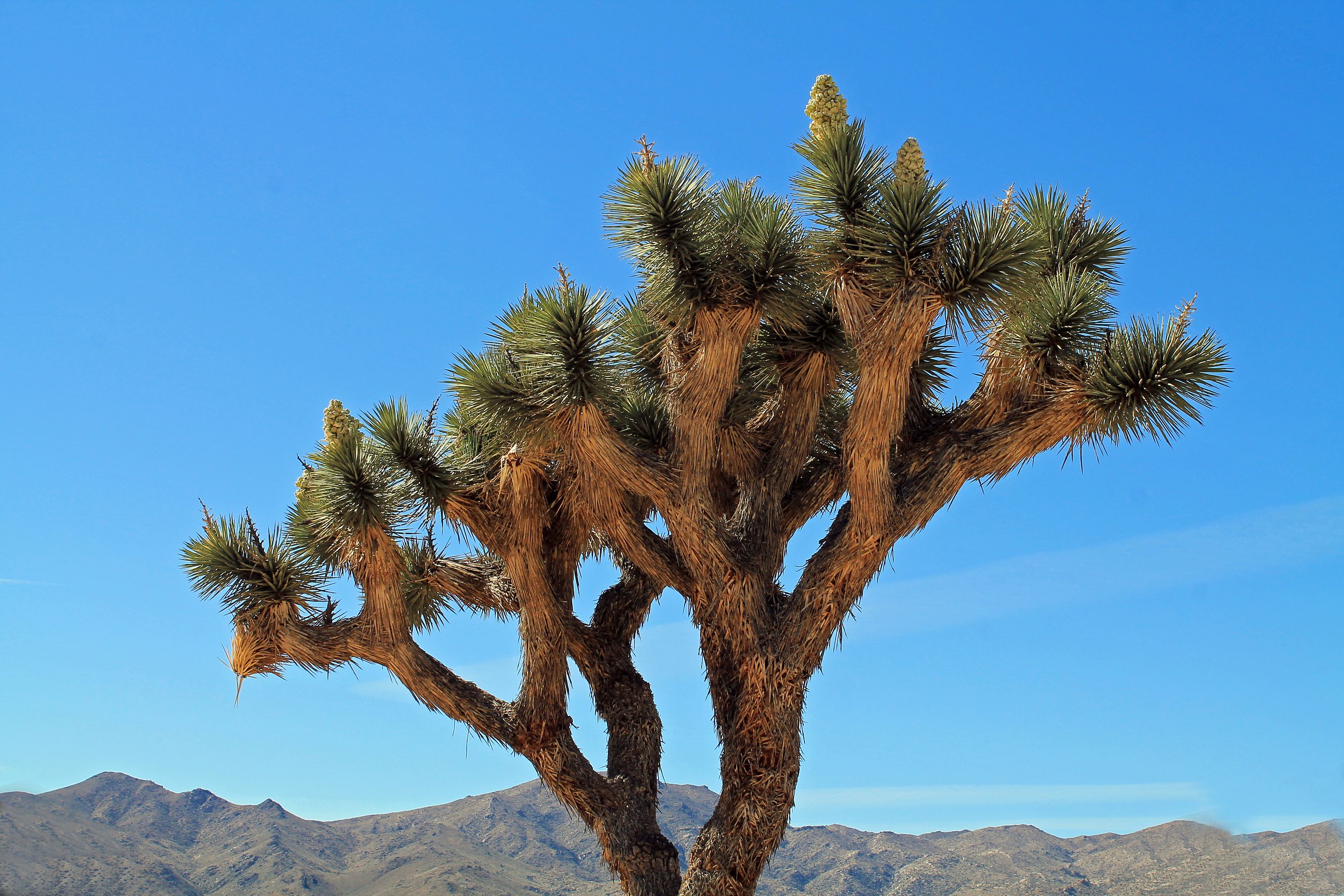Joshua trees need bold action. So do we.
By Kelly Herbinson, Mojave Desert Land Trust Executive Director
If you are reading these words, you probably have a relationship with Joshua trees. Some of you grew up among them and know them as family. Some of you moved to the desert later in life, at least in part, because of them. Or maybe some of you have never seen one in real life, and you hope to make your way to the Mojave to see their spiny branches warmed by the hot sun.
I remember driving from the coast to Arizona as a kid and winding through the Joshua tree forests bisected by Interstate 15. My sister and I sat quietly taking them in from our respective backseat windows, surprised by the desert holding something so immense—like they had consequence.
Photo: Carmen Aurrecoechea / NPS
They are lucky for their immensity. Unlike a small insect or fungus or plant that’s easy to ignore, and may even go extinct with no one ever noticing, it’s hard to look away when a species as ubiquitous and unique as a Joshua tree begins to decline. And unfortunately, it appears to be the case, at least in certain parts of their range.
There is evidence that climate change will shift temperature and precipitation patterns resulting in suitable Joshua tree habitat shrinking in this century. A peer-reviewed study famously showed that suitable Joshua tree habitat in Joshua Tree National Park may shrink to 2% under certain climate scenarios. Despite this evidence, both the state and federal governments have so far declined to formally list the species as threatened under the Endangered Species Act, in large part due to uncertainty surrounding the predictive climate science.
California did pass the Western Joshua Tree Conservation Act which requires the state to create a western Joshua tree management plan and puts a price tag on Joshua trees lost to development. The resulting funds will be used to protect significant Joshua tree habitat. Although we applaud the state for working towards a solution, we are concerned that the Act won’t build enough funding, nor incentivize the innovative programs needed to effectively ensure the long-term viability of the species.
In response, we initiated conversations with our partners including federal and state agencies, researchers, and other nonprofits to envision what is needed to truly protect the Joshua tree.
Those conversations led us to identify two significant and immediate needs.
The first is to build a Joshua Tree Conservation Coalition, ensuring communication and collaboration between agencies, land managers, Tribes, researchers, and other stakeholders to take bold, decisive, collaborative conservation action to fully protect the species.
The second initiative is a research project designed to build a comprehensive demographic dataset to monitor the status of western Joshua trees across their entire range over the long term so we can clearly see and measure changes at the population level. The resulting science is imperative for the Joshua tree conservation community to make science-backed land management and preservation decisions.
We at MDLT remain vigilant about the impacts of climate disruption in the desert and we are focusing our efforts on implementing innovative solutions to these problems. We are honored to take a leadership role in long-term protection for the Joshua tree and all of the life that calls the desert home. I can’t wait to get started.
We are thrilled to announce that the State of California, through the Wildlife Conservation Board, has agreed to fund these two initiatives through 2025. But we can still use your help! These types of initiatives cost our organization more than we are funded through our grants. If you are interested in supporting MDLT as we take bold, decisive conservation action for our most imperiled and important species like the Joshua tree, please consider a donation today.
A grassroots effort
MDLT has been one of the leading organizations mobilizing support in recent years for permanent protection of the western Joshua tree across its range. We gave the community tools to make their voices heard in support of listing the species under the California Endangered Species Act and a rally at MDLT head-quarters helped galvanize grassroots action. Hundreds of people wrote to decision-makers and made public comments at state committee meetings.
When the Western Joshua Tree Conservation Act passed, we convened a special informational event for the public with representatives of the California Department of Fish and Wildlife, the Center for Biological Diversity, and the U.S. Geological Survey, Western Ecological Research Center. Watch the recording on our YouTube channel to learn how the law impacts homeowners, where to apply for permits, and what steps we can take to ensure the Act protects the western Joshua tree.



